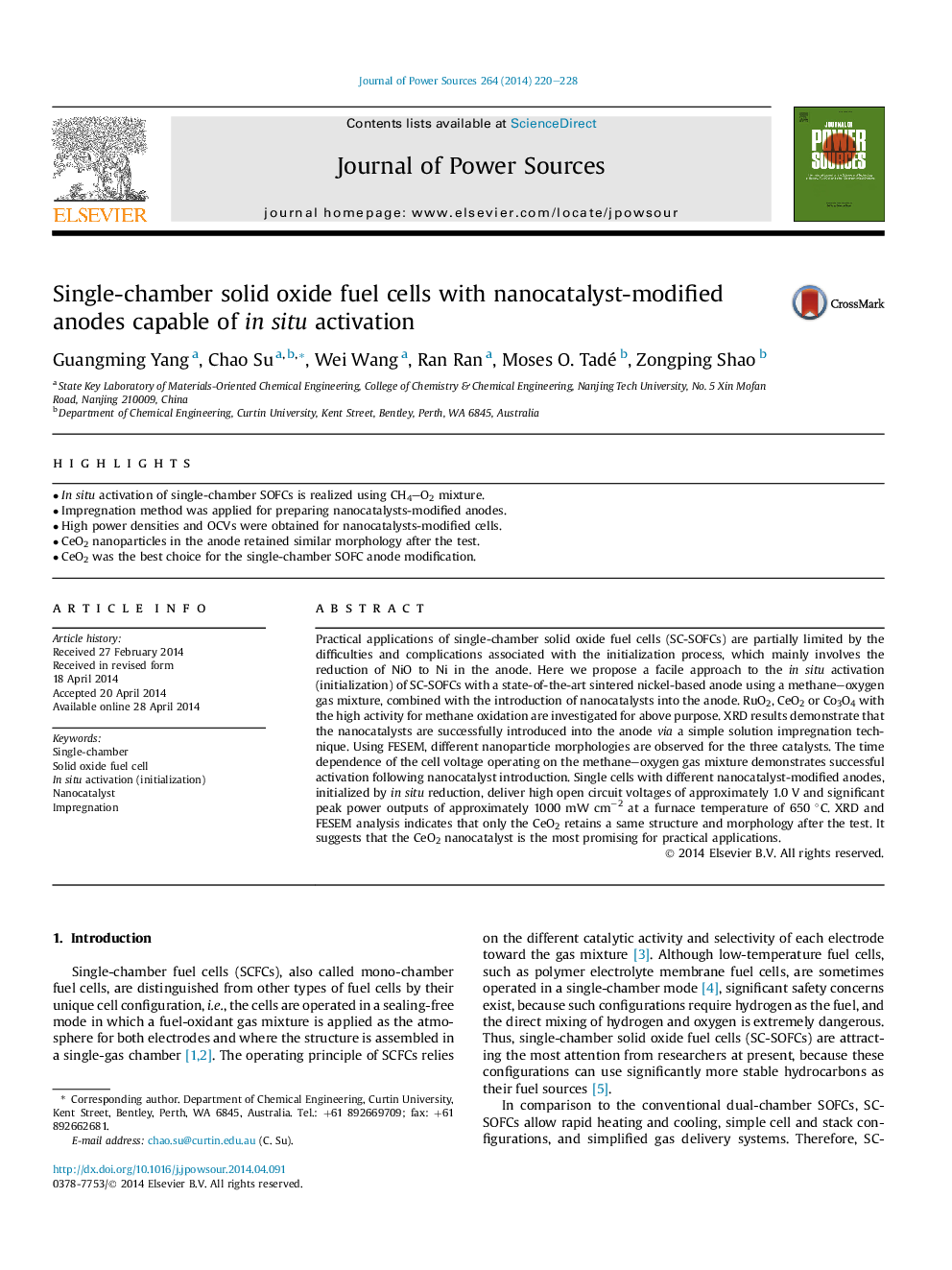| Article ID | Journal | Published Year | Pages | File Type |
|---|---|---|---|---|
| 1284089 | Journal of Power Sources | 2014 | 9 Pages |
•In situ activation of single-chamber SOFCs is realized using CH4–O2 mixture.•Impregnation method was applied for preparing nanocatalysts-modified anodes.•High power densities and OCVs were obtained for nanocatalysts-modified cells.•CeO2 nanoparticles in the anode retained similar morphology after the test.•CeO2 was the best choice for the single-chamber SOFC anode modification.
Practical applications of single-chamber solid oxide fuel cells (SC-SOFCs) are partially limited by the difficulties and complications associated with the initialization process, which mainly involves the reduction of NiO to Ni in the anode. Here we propose a facile approach to the in situ activation (initialization) of SC-SOFCs with a state-of-the-art sintered nickel-based anode using a methane–oxygen gas mixture, combined with the introduction of nanocatalysts into the anode. RuO2, CeO2 or Co3O4 with the high activity for methane oxidation are investigated for above purpose. XRD results demonstrate that the nanocatalysts are successfully introduced into the anode via a simple solution impregnation technique. Using FESEM, different nanoparticle morphologies are observed for the three catalysts. The time dependence of the cell voltage operating on the methane–oxygen gas mixture demonstrates successful activation following nanocatalyst introduction. Single cells with different nanocatalyst-modified anodes, initialized by in situ reduction, deliver high open circuit voltages of approximately 1.0 V and significant peak power outputs of approximately 1000 mW cm−2 at a furnace temperature of 650 °C. XRD and FESEM analysis indicates that only the CeO2 retains a same structure and morphology after the test. It suggests that the CeO2 nanocatalyst is the most promising for practical applications.
